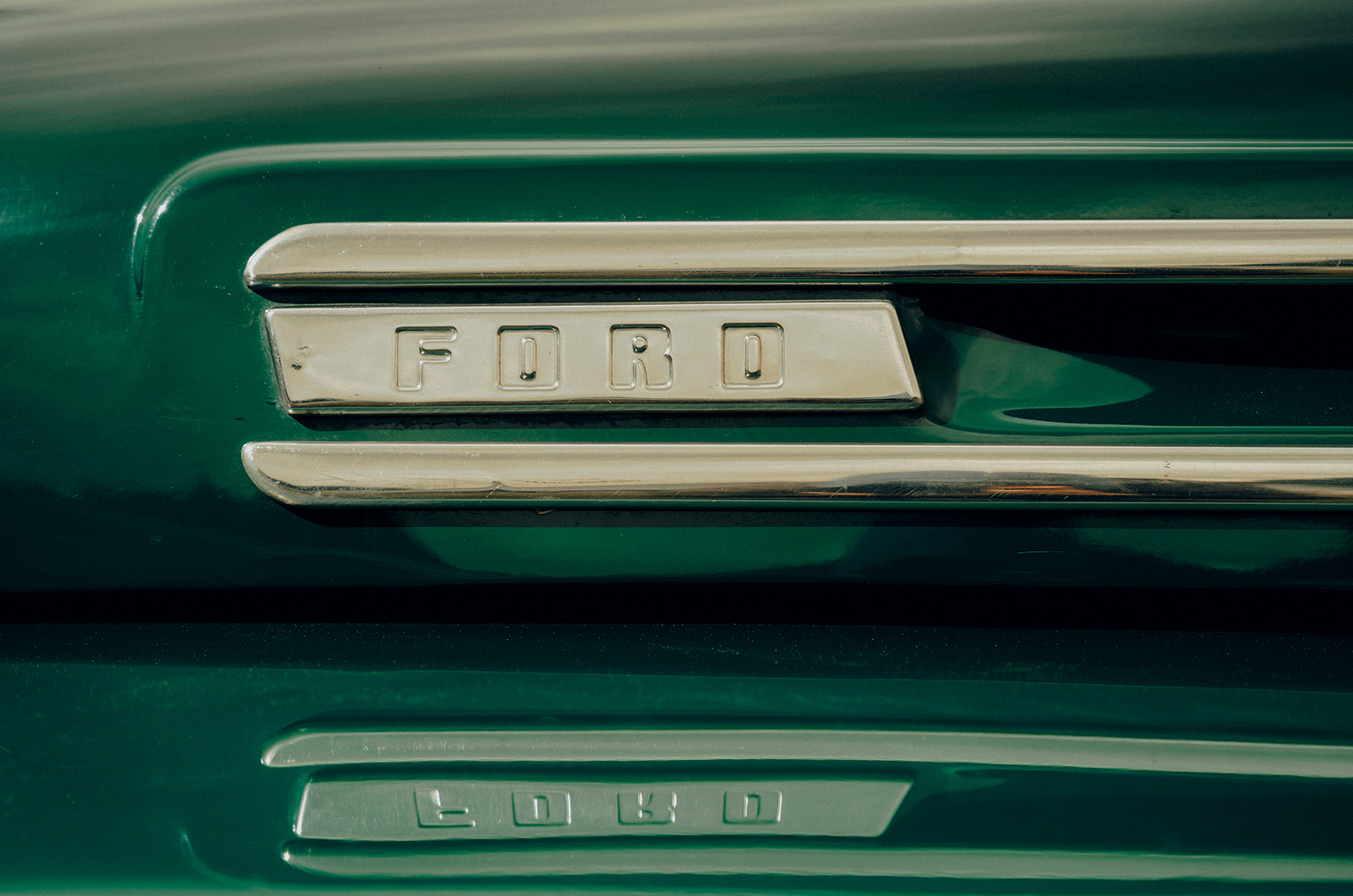The doors are covered in a piece of body-coloured sheet steel; look down and you’ll see the large, circular clutch and brake pedals emerging from the floor.
Look up, and the headlining is a piece of black cardboard.
You sit quite tall, as in a Range Rover, with the roofline of a Porsche 911 about level with the bottom of the door windows.
The view over the bonnet is beetle-browed, somewhat akin to being behind the wheel of a giant Morris Minor.
Worm-and-roller steering combines with solid axles and leaf springs to limit the Ford F-1’s cornering prowess
There is a distinctively creamy yet slightly offbeat resonance to the flathead Ford V8, with surprisingly eager throttle response.
In terms of straight-line urge this Ford would have been a revelation to drivers of British half-ton load-haulers.
Indeed, this truck’s acceleration would probably have impressed some sports-car drivers, with a smooth, lively flow that feels disproportionate to a top speed that must be geared down to something no greater than 80mph.
The Ford F-Series pick-up’s door trims are simple painted steel
This was the first year of the column shift, a floppy but friendly three-speed affair that requires little of your attention, the aim being to get into top as quickly as possible and exploit the torque, rather than extend too deeply into the modest rev band.
The steering very much requires your attention. It is low-geared to keep the effort required light, but you have to learn to allow it to find its own path.
You do not so much steer the Ford F-Series as provide it with suggestion as to where it might like to go.
The brakes merely require the anticipation you would expect in any vehicle of more than 70 years old.
Does the Ford F-Series pick-up truck best represent the USA’s motoring history?
If the national car of Britain is the Mini, and of Germany the VW Beetle, then the Ford F-Series would get my vote as the vehicle that best encapsulates American expectations in personal transport, even more so now than it did in 1950.
The F-Series began the trend, quietly evolving in the background while bearing witness to the rise and fall of the mighty American motor industry.
From tailfins through the muscle era and way beyond malaise, the Ford pick-up has held true to its original values.
It has been the best-selling American vehicle for the past half a century (700,000 F-Series trucks were sold last year alone) and, to misquote Charlton Heston, it will be out of their ‘cold dead hands’ that it is taken away from the drivers who love them.
Images: Max Edleston
Thanks to: The Classic Motor Hub
Enjoy more of the world’s best classic car content every month when you subscribe to C&SC – get our latest deals here
READ MORE
37 little-known classic pick-ups
Jeep Cherokee 4.0 Limited vs Range Rover 3.9 SE: Uncle Sam fights back
Morris Oxford Traveller vs Borgward Isabella Combi: practically perfect?
Martin Buckley
Senior Contributor, Classic & Sports Car























